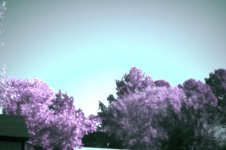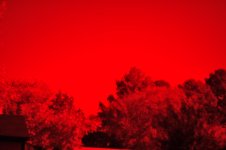Welcome to the forum.
Here's the thing about IR photography - yes, you can shoot with a normal camera "as is" using filters. But, and it's a significant one, the filter stack on current DSLRs, like your D3200, have IR filtration built in to the filter stack. So, when you filter out everything but the IR wavelengths, the total amount of light you have coming in is much less than what you're used to, so you're going to be using long exposure times and tripods to get the shots you want. And even then the shot you get may not be nearly as dynamic as what you'll get from a converted camera. A converted camera removes the IR filtration and substitutes a filter blocking out some portion of the visible spectrum. 720nm filters are the most popular, but you can get filters that allow in more visible light and color, and these are becoming more and more popular. Some Nikon cameras seem to have an issue white balancing in-camera post conversion, but as long as you're shooting RAW you can overcome this in post - and you will almost always need to do a certain amount of post with IR.
So, do you need a second camera? Not necessarily. Cameras can be converted for dual or even full spectrum use. Dual simply removes the IR filtration from the filter stack but does not add the visible light filter. So, your camera now shoots both at the same time, and all filtration will now be done externally. Want to shoot normally? Stick the IR filter on the lens. Want to shoot IR? You can now add the filter of your choice and not be stuck with a fixed wavelength conversion. It's a great option, but not without drawbacks. First off, your lenses don't typically have the same filter size, so you either have to buy multiples, or just buy the largest for your lens set (or potential set) and then use step down converters to put the larger filter on the smaller lenses (and btw, larger glass means more expensive glass - running about $80-90 each, plus conversion cost). It also means that you always need to have a filter on, and if you want to use an ND or polarizer then you've got two extra pieces of glass on the lens.
My recommendation to someone who wants to do it is to get a converted camera. If you don't know which one, get the one that allows in more visible light, because you can always add extra filtration. I have a 720nm conversion and if I want to shoot at 590nm there's nothing I can do. But I can always add a 720nm filter on a 590nm coverted camera.
Lifepixel seems to be the most popular conversion company, but I would heartily recommend the folks at Kolari Vision. They did a great job on mine, including free focus calibration on one lens (I use my 18-105mm almost exclusively on the camera).


